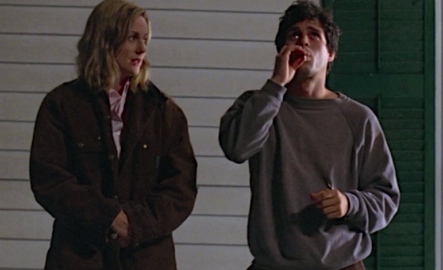In the film You Can Count on Me, Laura Linney and Mark Ruffalo play grown siblings who were orphaned as children. At one point, they’re talking outdoors at night, and a moth flutters into the frame. (If you look carefully at the above photo, you can see a small white moth at the top of Ruffalo’s left fist.)
On most film sets, the director might call cut and shoo it away. Instead, Ruffalo kept talking as he nonchalantly guided the moth onto his hand. His calm reaction kept the cameras rolling, and the unplanned gesture underscored his character’s gentleness.
“We just continue talking as it’s walking on my hand, and then it flies away again,” Ruffalo recently recalled, speaking to Rebecca Mead for the New Yorker. “It was probably one of the most profound moments I have had as an actor — where the world collided with the work.”
When you present, disruptions will sometimes happen.
Anyone who is used to speaking or presenting knows that disruptions flutter (or crash) onto the scene when they least expect them. Maybe your “moth” will be a faulty projector, computer glitch or hallway noise — any distraction that threatens to derail your audience’s attention and bury your message.
But the most effective speakers know that how they choose to deal with those disruptions might be the difference between a flawless speech and a floundering speech, a fruitful presentation and a fumbled one.
For example, Ruffalo didn’t know the moth would appear, but he no doubt knew his lines. And he and Linney had likely rehearsed the scene. That’s how he was able to keep the conversation going while dealing with the moth at the same time.
Knowing and practicing your lines lets you go off script.
Knowing your content and practicing your delivery gives you the freedom to improvise when you face unexpected interferences during your presentation. In fact, it can even boost your message.
So much of speakers’ effectiveness comes down to the stuff they don’t actually say. It’s in their bearing, their body language, their tone.
If you can handle disruptions smoothly and gracefully, it may subtly encourage your audience to like and trust you, which can in turn help them come on board with the message you’re delivering verbally.
The above content is excerpted from Sam Harrison’s article for Fast Company on November 9, 2016. To see the entire article with more valuable suggestions on dealing with presentation disruptions, go here.
 zingzone
zingzone